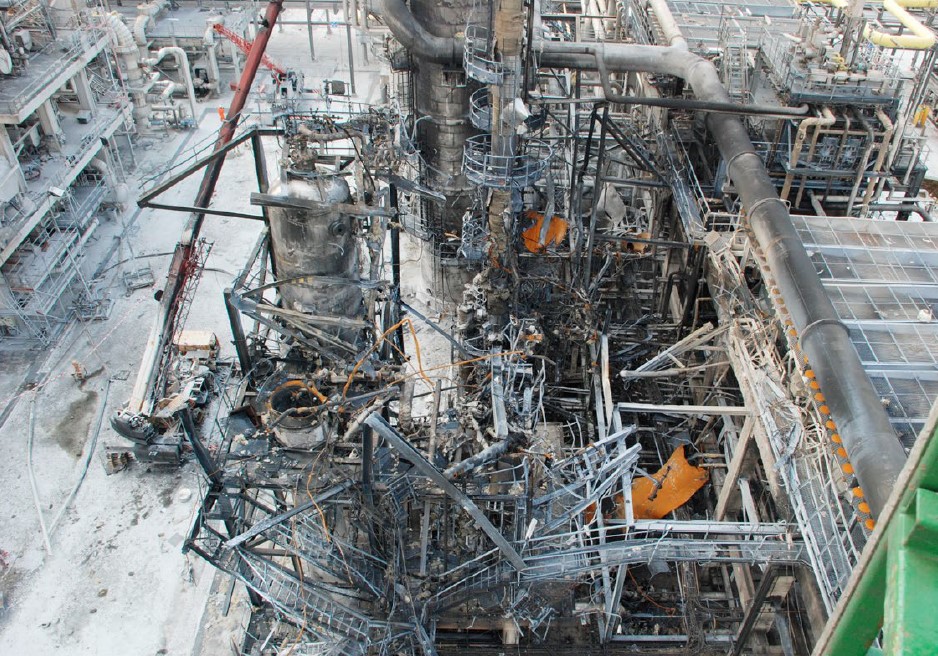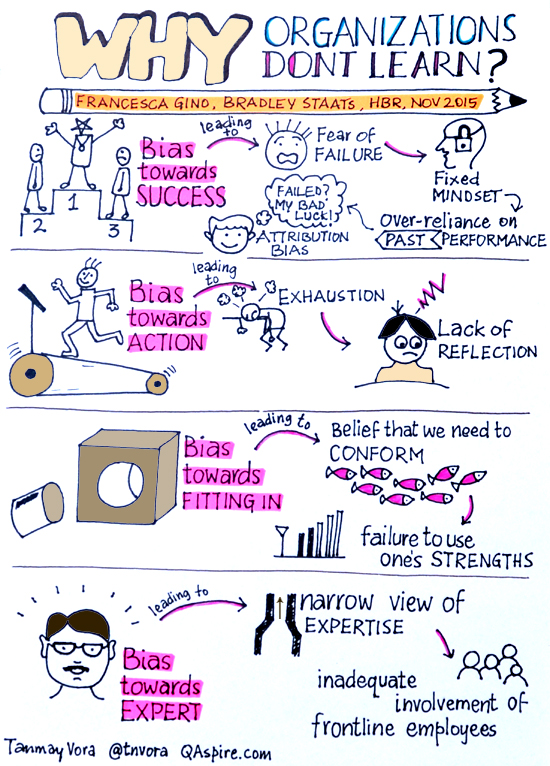Shell Moerdijk Explosion: “Failure to Learn”
On 3 June 2014 two major explosions and a fire occurred at a Shell petrochemical plant in Moerdijk, Netherlands. Two employees were injured in the explosions that were heard 20 km away. Debris was found 800 metres away.
The Dutch Safety Board has investigated this incident. Currently only the investigation summary is available in English.
UPDATE 10 December 2015: The full report in English is now released. The article below has been enhanced with extra details. They have also issued a VIDEO.
The Explosion
The Propylene Oxide-Styrene Monomer 2 (MSPO2) plant had been shut down to replace catalyst granules and was being restarted. Operators manually increased the warming of the reactors with ethylbenzene. This triggered an unanticipated reaction, gas formation and a pressure build up. Fluctuations in pressure did not cause alarm because operators had become used to fluctuations during previous re-starts and considered them normal. An automatic protection system tripped but had the unintended consequences of preventing the venting of the gas. The rapid pressure rise in the reactors resulted in their explosion.
The Causal Factors
The DSB comment that:
- Shell failed to “identify and control risks associated with plant modifications” and the potential for chemical reaction between ethylbenzene and the new catalyst was not identified
- Design data and knowledge was not translated into plant operating procedures, resulting in discrepancies that were not identified
- Opportunities existed to stabilise or halt the process but they were not taken by operators
- Shell “failed to learn sufficient lessons from a previous incident” at a Shell joint venture facility in Nanhai, China in 2010.
Failure to Learn
Further to the failure to learn from the event in China, the DSB report also noted a reaction runaway occurred at Moerdijk in 1999, despite repeated prior statements by Shell that such an event could not happen in that reactor. The DSB note that the 1999 event, that undermined Shell’s earlier technical analysis, did not prompt a fundamental review.
The concept of a failure to learn has been raised in relation to BP after the 2005 Texas City refinery explosion for example, prior to the 2010 Macondo / Deepwater Horizon disaster. It is also the subject of a book of the same title by Australian National University Emeritus Professor Andrew Hopkins. It also can apply to a failure to learn from accidents to other organisations (as we discussed in the case of a US helicopter operator).
In contrast the DSB highlight that the local fire and emergency services had learnt from past emergencies (such as the nearby 2011 fire at the Chemie-Pack facility). There were areas for improvement though, such as emergency alerting of the local population.
In the 2008 book Resilience Engineering Perspectives, Volume 1: Remaining Sensitive to the Possibility of Failure, John Wetherall writes:
…one hallmark of a resilient organisation is that it is prepared not only for its own failures those of which it can learn from others – the more resilient it is, the ‘bigger’ are the lessons it has learnt from others.
Safety Management and Regulatory Oversight
In light of the shortcomings found at the plant, the DSB oddly report they had a “positive view” of the site’s “comprehensive” safety management system (SMS). They are also complimentary about Shell initiatives such as ‘Hearts and Minds‘ and note that the company has been seen as a leader in safety. However the DSB note that Hearts and Minds was not applied systematically and that since 2011 only one safety culture survey had occurred and that involved just 28 of 800 people on site (3.5%). Ironically, Shell ranked themselves as ‘calculative’ on the Hearts and Minds culture scale, without the DSB say, any substantive measurements: Oddly this median level is also described as ‘the required level’ perhaps indicating a lack of ambition or true commitment to safety enhancement. The DSB go on to say that Shell had failed to follow a number of their own procedures including their Management of Change process. In other organisations it has been apparent after accidents that the documented SMS was not an effective, living system but in practice was just ‘shelfware’ (as we recently discussed in the case of Metro-North).
Another organisation with a positive reputation for safety, DuPont, has recently suffered a series of fatal accidents that highlighted poor maintenance and risk assessment. This resulted in enforcement action and much criticism from unions, regulators and accident investigators. The DSB comment that the Shell site is subject to “system-related supervision” by the regulator (effectively a form of performance based regulation [PBR]) while highlighting the importance of the operator identifying their own shortcomings. They also say that regulators should pay more attention to critical processes such as maintenance and start-up.
Safety Recommendations
The DSB have made recommendations to Shell on risk assessment (including the challenge of previous assumptions) and enhancing their incident analysis and knowledge management.
Wider Learning Opportunities
We have previously reported on two other cases were inadequate risk assessment by Shell have been identified in accident investigation reports issued this year:
- The Australian Transport Safety Bureau (ATSB) report on a serious injury on-board the Shell NWS Class LNG tanker Northwest Stormpetrel on 8 November 2014.
- The US National Transportation Safety Board (NTSB) report on the grounding in bad weather of the Shell owned mobile offshore drilling unit (MODU) Kulluk, in Alaska, on 31 December 2012.
- How To Develop Your Organisation’s Safety Culture positive advice on the value of safety leadership and an aviation example of safety leadership development.
- How To Destroy Your Organisation’s Safety Culture a cautionary tale of how poor leadership and communications can undermine safety.
UPDATE November 2015: In an HBR article entitled Why Organizations Don’t Learn Francesca Gino and Bradley Staats outline cultural and individual biases that prevent organisations to learning:
- Fear of failure
- A fixed (rather than growth) mindset, afraid of failure
- Over-reliance on past performance, rather than considering learning opportunity
- Attribution bias, taking credit for success and blaming bad luck for failure
Tanmay Vora expands on that with this graphic that highlights the biases that Gino and Staats identify:
UPDATE March 2016: The DSB has also launched an investigation into the emission of 25 tonnes of ethylene oxide at Shell Moerdijk. It appears this leak, following a repair in November 2015, was only discovered 2.5 months later.
UPDATE 3 May 2016: The US National Transportation Safety Board (NTSB) discussed safety culture and a failure to learn at a hearing into an accident at a Board Meeting on a Washington Metrorail (WMATA) smoke and arcing accident that occurred on 15 Jan 2015 (VIDEO).



Recent Comments